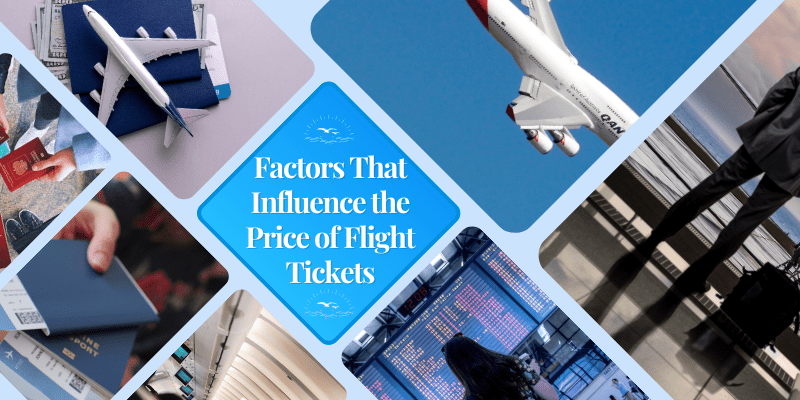
Factors That Influence the Price of Flight Tickets
When it comes to booking a flight, travelers often find themselves navigating a complex web of prices, wondering why fares vary so greatly even for the same route. The cost of a flight ticket isn’t arbitrary; it’s determined by a multitude of factors. In this article, we will explore these factors that influence the price of flight tickets, shedding light on the mysteries of airfare pricing.
1. Demand and Supply Dynamics
One of the fundamental drivers of airfare pricing is the classic economics of supply and demand. Airlines adjust ticket prices based on how many seats are available and how many people want to book them. During peak travel seasons or holidays, when demand is high and seats are limited, prices tend to soar. Conversely, if you book during off-peak times or unpopular hours, you’re more likely to find lower fares.
2. Booking Lead Time
The timing of your flight booking can significantly impact the price you pay. Generally, booking well in advance can secure lower fares. Airlines often release their flight schedules and fares around 11 months before departure. As seats fill up, prices tend to rise. However, last-minute deals can sometimes be found if airlines have unsold seats close to the departure date.
3. Time of Travel
The time of day you choose to fly can also affect ticket prices. Early morning and late-night flights are often cheaper than those during peak hours. This is because these less popular flight times may not be as convenient for passengers, resulting in lower demand and lower prices.
4. Airline and Route
The airline you choose and the specific route you take can have a significant impact on ticket prices. Different airlines have different pricing strategies, and some may offer lower base fares but charge extra for amenities like baggage, meals, and seat selection. Additionally, flights with multiple layovers or less direct routes tend to be cheaper than non-stop flights.
5. Class of Service
The class of service you select plays a substantial role in determining the price of your ticket. First class and business-class seats come with a premium price tag due to the enhanced comfort, services, and amenities they offer. On the other hand, economy-class tickets are more budget-friendly but come with fewer perks.
6. Seasonal Variations
Airfare prices can fluctuate seasonally. For instance, flights to tropical destinations may be more expensive during the winter when travelers seek warmer climates. Conversely, flights to ski destinations may be pricier during the winter season. Being aware of these seasonal patterns can help you plan your trips more cost-effectively..
7. Fuel Costs
Fuel costs have a direct impact on airline operations, and these costs can be passed on to passengers in the form of higher fares. When oil prices rise, airlines may increase ticket prices to compensate for the added expense. Conversely, when fuel costs decrease, passengers may see some relief in airfare prices.
8. Competition in the Market
Competition among airlines on a specific route can lead to lower fares. When multiple carriers operate the same route, they often engage in price wars to attract passengers. This competition can benefit consumers by driving down prices.
Conclusion
The price of flight tickets is influenced by a multitude of factors, making airfare pricing a complex and dynamic process. Understanding these factors and how they interact can help travelers make more informed decisions when booking flights. By being aware of these variables, you can increase your chances of finding the best deals and securing affordable flight tickets for your next adventure.
Search
Categories
Airline Reviews Airport Review Best Places to visit in indiaBusiness class tickets Canada To India Flight Airport Review Airport Review
Recent Post
Advantages of Flight CancellationsWhy are airline tickets so expensive” The Ultimate Travel Guidelines Best Ways to Get Cheap Flight Tickets San Francisco To Ahmedabad Flights



 1-888-296-8115
1-888-296-8115 1-855-478-4115
1-855-478-4115



